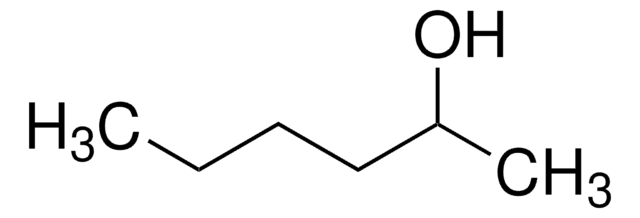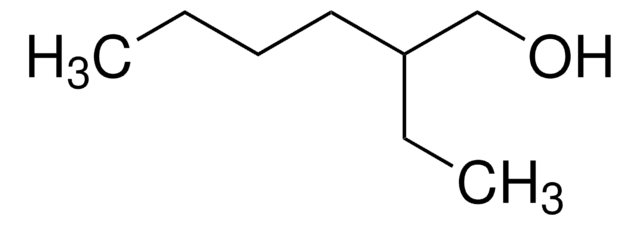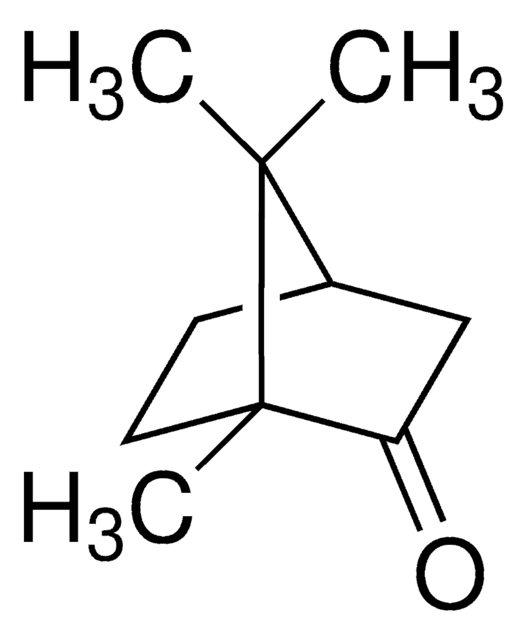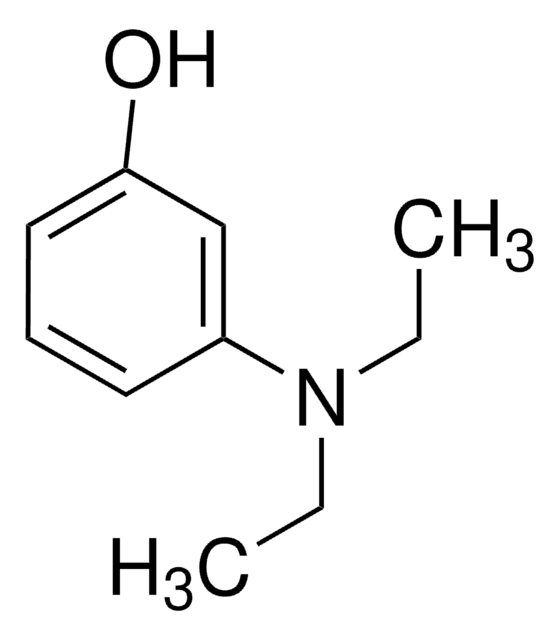52828
1-Hexanol
ReagentPlus®, ≥99.5% (GC)
Synonyme(s) :
Hexyl alcohol
About This Item
Produits recommandés
Densité de vapeur
4.5 (vs air)
Niveau de qualité
Pression de vapeur
1 mmHg ( 25.6 °C)
Gamme de produits
ReagentPlus®
Essai
≥99.5% (GC)
Température d'inflammation spontanée
559 °F
Indice de réfraction
n20/D 1.418 (lit.)
n20/D 1.418
pb
156-157 °C (lit.)
Pf
−52 °C (lit.)
Densité
0.814 g/mL at 25 °C (lit.)
Groupe fonctionnel
hydroxyl
Chaîne SMILES
CCCCCCO
InChI
1S/C6H14O/c1-2-3-4-5-6-7/h7H,2-6H2,1H3
Clé InChI
ZSIAUFGUXNUGDI-UHFFFAOYSA-N
Vous recherchez des produits similaires ? Visite Guide de comparaison des produits
Catégories apparentées
Informations légales
Vous ne trouvez pas le bon produit ?
Essayez notre Outil de sélection de produits.
Mention d'avertissement
Warning
Mentions de danger
Conseils de prudence
Classification des risques
Acute Tox. 4 Dermal - Acute Tox. 4 Oral - Eye Irrit. 2 - Flam. Liq. 3
Code de la classe de stockage
3 - Flammable liquids
Classe de danger pour l'eau (WGK)
WGK 1
Point d'éclair (°F)
140.0 °F - closed cup
Point d'éclair (°C)
60 °C - closed cup
Équipement de protection individuelle
Eyeshields, Faceshields, Gloves, type ABEK (EN14387) respirator filter
Faites votre choix parmi les versions les plus récentes :
Déjà en possession de ce produit ?
Retrouvez la documentation relative aux produits que vous avez récemment achetés dans la Bibliothèque de documents.
Les clients ont également consulté
Notre équipe de scientifiques dispose d'une expérience dans tous les secteurs de la recherche, notamment en sciences de la vie, science des matériaux, synthèse chimique, chromatographie, analyse et dans de nombreux autres domaines..
Contacter notre Service technique









